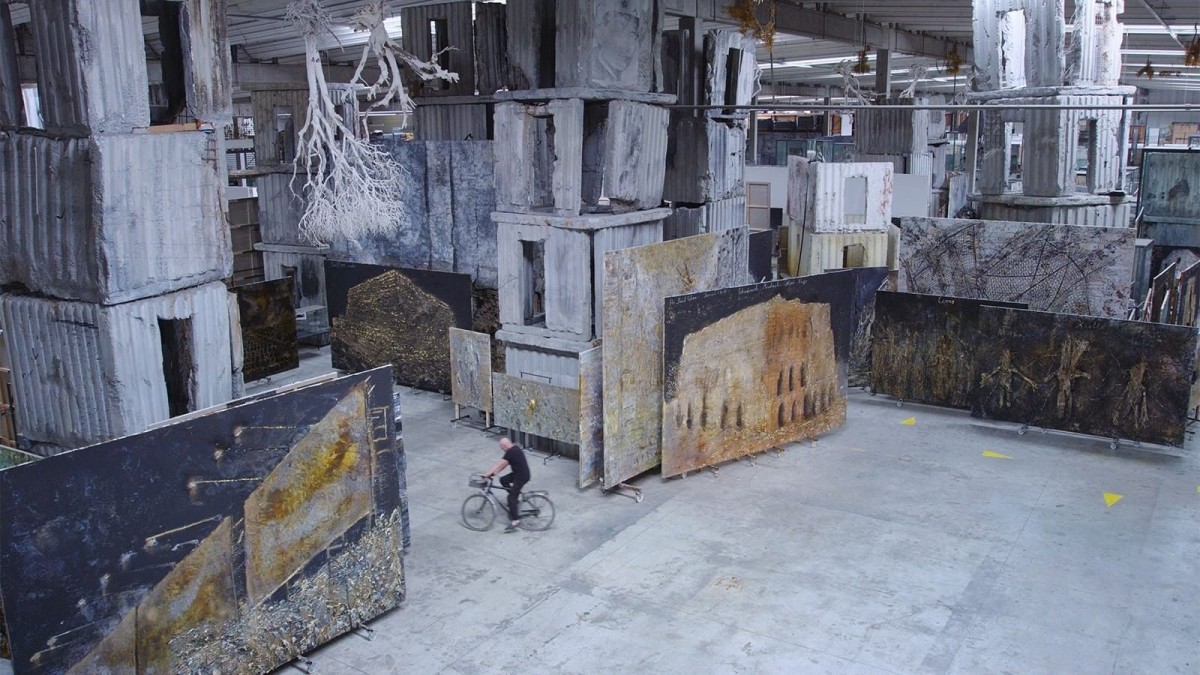“Anselm,” a 3D documentary, charts the life and art of Anselm Kiefer — a German maverick whose canvases filled with paint, straw, clay, ash and shellac critique Germany’s past.
The film, directed by Wim Wenders, begins with Kiefer’s sentinel watch over a display of hand-tailored wedding dresses, suddenly appearing on ivory, papier-mache statuary. The dresses come to life, each embedded with ephemeral narrations. Voices whisper over each other in opposing languages, initiating an onslaught of adages regarding their state of being. The animate wedding dresses each have their own souls, bound in nontraditional materials like wood, glass and wire. The garments are striking in their structure — it’s as though the crude materials are trapping the souls embedded within the dresses. A documentary about an artist must begin with a dramatic launch — and Wenders’ choice of opening scene effectively immerses the spectator into Anselm’s aural realm.
Wenders’ decision to make this a 3D experience makes each shot more engaging and sensorial. Wenders shows the artist’s life in three parts, with Kiefer’s son (Daniel Kiefer) and Wender’s grand-nephew (Anton Wenders) both playing Kiefer as a young boy in different stages of the film and of the artist’s life. Each part of the documentary leans into the eyes of the audience, subtly and intriguingly. Subverting the trope of a 3D film being cheesy and action-packed, Wenders uses the technique to enhance Kiefer’s artwork, such as the brushstrokes in his impasto and the infinitude of his canvases.
Wenders depicts Kiefer’s huge stretch of land in Croissy-Beaubourg — outside of Paris — with a wide, high-altitude shot which grants dimension to the leaning structures protruding out of the landscape. The director effectively tracks all of Kiefer’s movements as he swerves past towering shelves of endless art supplies on a rickety old bike. His canvases reach to the heavens, almost kissing the ceiling of the warehouse. The enormity of his artworks requires Kiefer to use a man lift to paint the pieces in entirely.
Kiefer’s art has similar immersive effects on Wenders’ cinematography and editing. Anselm, through his provocative works, comments on the atrocity of Germany’s history. Themes of Nazi rule and figures permeate his paintings. Like Kiefer’s paintings, most of Wenders films are dark and grim. The director’s own thematic interests in isolation and desolation make him amply equipped to tell Kiefer’s story.
“Anselm” pulls audiences into the experience of one of the world’s most contemporary, successful and committed artists. Through his detailed direction, Wenders showcases paintings that impress the eye and honor the chasmic human soul.
“Anselm” arrives in cinemas on Dec. 8.
Contact Amalia Rizos at [email protected].

























































































































































